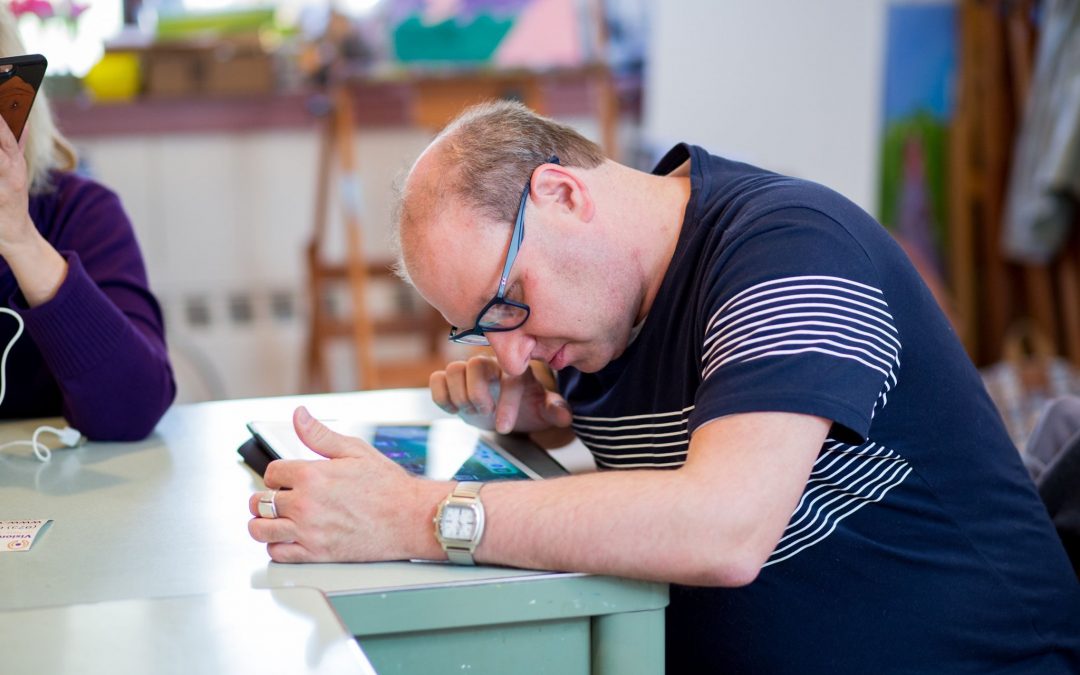
by admin | Feb 4, 2020 | Blog, News
There are different levels of vision loss and different levels of blindness – being considered legally blind does not necessarily mean the person can’t see anything.
Using nonvisual techniques and tools like a cane when some vision remains doesn’t mean the person is “faking” it. They’re just picking techniques that are most efficient and safe to use with the vision they have left!
Be kind and be courteous, and if you’d like to find out more about the type of vision loss the person has – ask them if they’d be interested in teaching you about it!
At Vision Loss Alliance of New Jersey, we are dedicated to helping people who are blind or have low vision by offering programs that help them learn new skills and gain confidence for an independent life. Want to find out more about our programs? Reach out to the Program Director, Linda Groszew at lgroszew@vlanj.org or at 973-627-0055 ext. 1312.
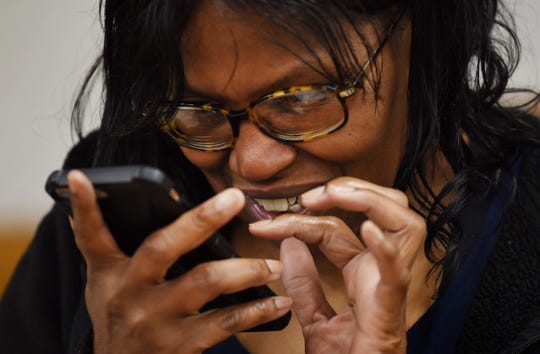
by admin | Feb 1, 2020 | Blog, News
On Tuesdays, we offer a program that centers around accessible technology. 📲
Students learn about various features of the iPhone and iPad that are designed to make the user experience easier for people who are blind or have low vision. They also learn basic functions of the devices, such as email, texting, and using the internet, and are taught about apps for daily living & organization.
Can you make a small donation to help us continue to offer programs like Technology Tuesday? Any contribution helps! You can donate by clicking the link below:
vlanj.org/donations.
Thank you!
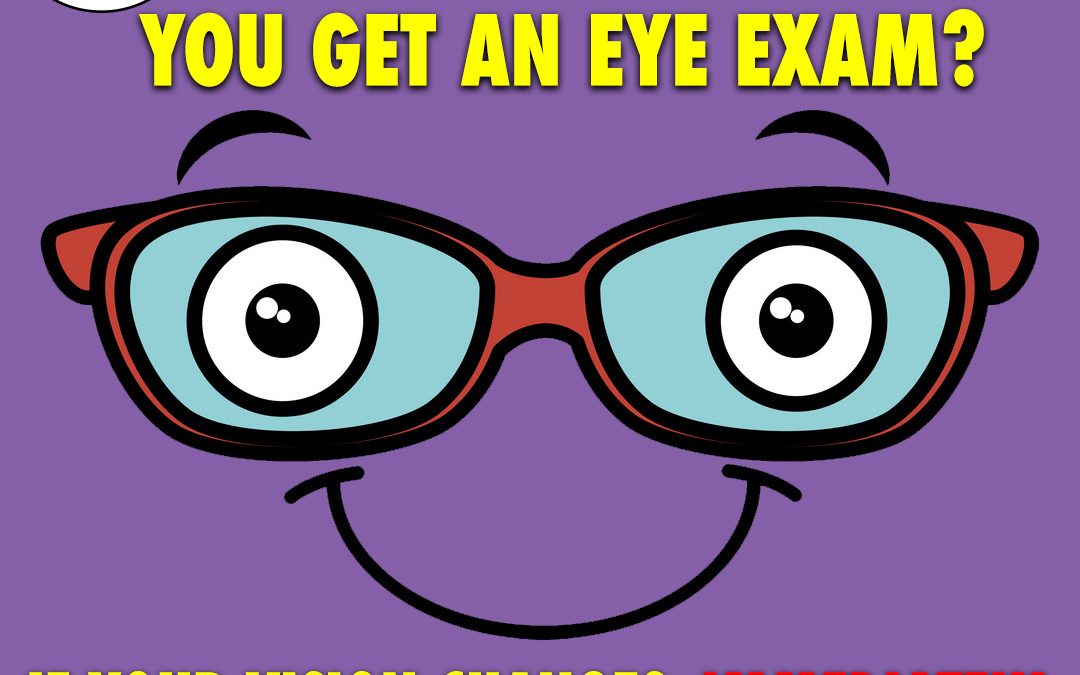
by admin | Jan 31, 2020 | Blog, News
According to a recent survey by the American Academy of Ophthalmology (AAO), most folks fall short when it comes to knowledge about eye diseases.
👁️ Although 81% of the 3500 surveyed adults were knowledgeable about vision health, only 19% knew the three main causes of blindness in the United States: glaucoma, age-related macular degeneration and diabetic eye disease.
👁️ Only 47% knew that vision loss and blindness don’t affect all people equally, and just 37% knew that people don’t always have symptoms before they lose their vision to eye diseases. In addition, less than half (47%) knew that because it adapts to vision loss, the brain can make it difficult to know if you are losing your vision.
How can you know for sure? Get an eye exam! Everyone should get an eye exam at least once a year, and go see an eye doctor immediately when noticing any changes in vision.
Vision Loss Alliance of New Jersey is dedicated to empowering adults with profound vision loss or who are blind lead independent and active lives. If you or a loved one is experiencing severe vision loss, and would like some information, reach out to us to find out more about our programs and how we can help by emailing Linda Groszew, our Program Director, at LGroszew@vlanj.org or calling 973-627-0055 ext 1312.
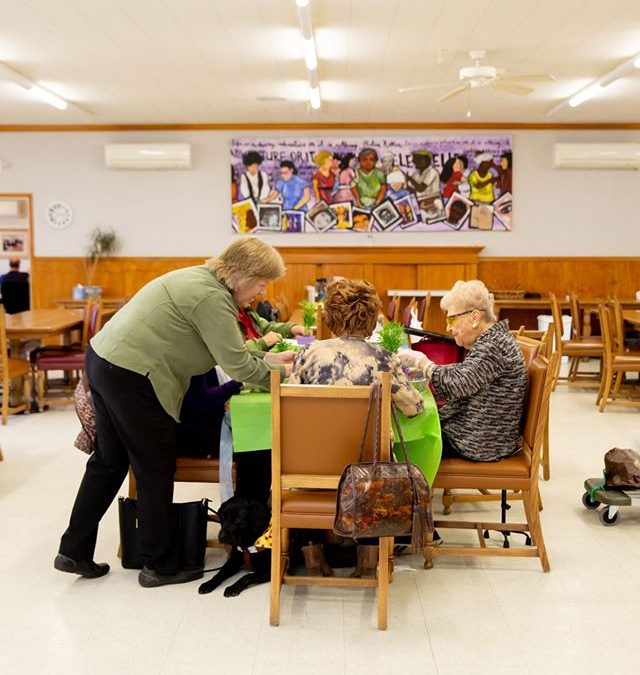
by admin | Jan 30, 2020 | Blog, News
People who are blind are still ordinary people. It can feel quite awkward for them if you say they are amazing for accomplishing ordinary tasks like walking or tying shoes. They too like ordinary things and have ordinary hobbies, but it’s not necessary to make a big deal of everything.
Also keep in mind they probably have years of experience using nonvisual techniques to live their lives. Feel free to ask how they do something, or how best you can assist them, if help is needed, but don’t assume they can’t accomplish something simply due to not being able to see.
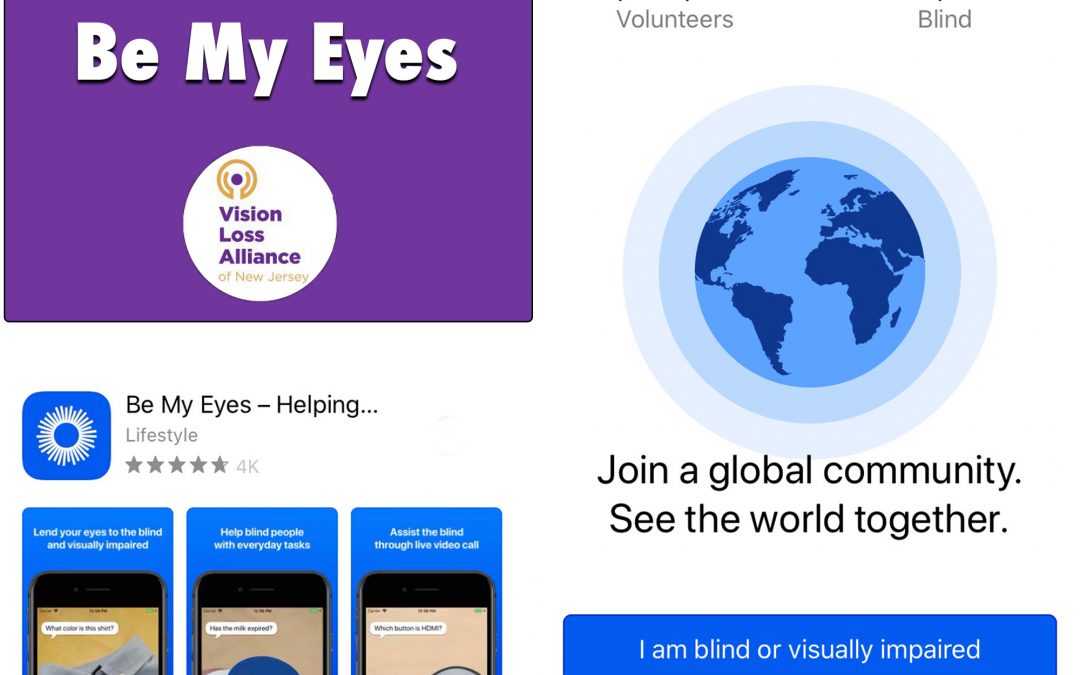
by admin | Jan 29, 2020 | Blog, News
Be My Eyes is a free app that was created to help people who are blind or low-vision with daily tasks.
Through a live video call, blind and low-vision users connect with volunteers who provide them with visual assistance for tasks ranging from matching colors, to checking if the lights are on, to preparing dinner, etc.
The app is available on iOS and Android, and is free for all users!
We explore different accessibility apps during Tech Tuesday, as well as in our Apps Club that meets as part of our Health & Wellness Program every Thursday. For more information about our programs, please contact our Program Director, Linda Groszew, via email ✉️ lgroszew@vlanj.org or by calling ☎️ 973-627-0055 ext. 1312.
Image description: The image is divided in 3 sections. Top left is a purple rectangle. In beige text, the top line states “APP HIGHLIGHT:” and in white text, middle line states “Be My Eyes”. At the bottom is a white circle highlighting the Vision Loss Alliance of New Jersey logo.
The bottom left is a white rectangle showing the “Be My Eyes” app as it appears in the Apple App Store, with the blue logo, 3 images of app use, and star rating and description of the app.
The right side of the image shows the home screen of the app once it’s downloaded. The text reads “3,408,673 Volunteers, 185,899 Blind. Join a global community. See the world together.” There is an image of a blue globe centered on the screen. The bottom has two blue buttons: “I am blind or visually impaired” and “I am sighted volunteer.”
by admin | Jan 28, 2020 | Blog, News
How exciting! Students at Ohio State School for the Blind are testing a new kind of paint – smart paint – that can make outside navigation safer for people who are blind or have visual impairments!
The smart paint is used on crosswalks, and it pairs with sensors installed in students’ canes 🦯 to alert them when they reach the borders of a crosswalk.
“Every large university has a significant population of blind and visually impaired students,” says John Lannutti, a professor from The Ohio State University’s college of Engineering who is leading the study. “Getting them from point A to point B can be difficult and sometimes dangerous, especially when automobile traffic is involved.”
Lannutti’s team proposes to add smart paint to campus intersections to ensure students who are blind or low vision can navigate the campus safely by staying inside crosswalks. Great start to making streets safer! Read more in the article below.
https://edtechmagazine.com/higher/article/2019/12/smart-paint-could-improve-campus-safety-visually-impaired-students?fbclid=IwAR1NlCjUUXe-kQMz7sQw7uCFJLwVGmcIkjHdPKU7RHEyCnFgD1CPkFpgoSY





